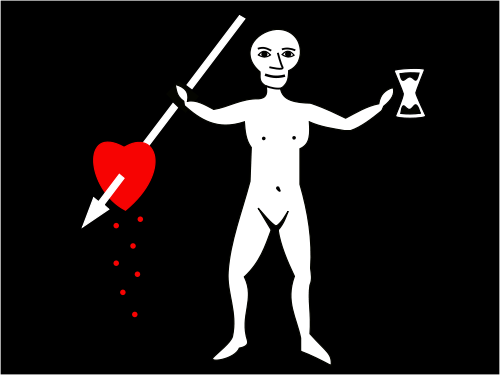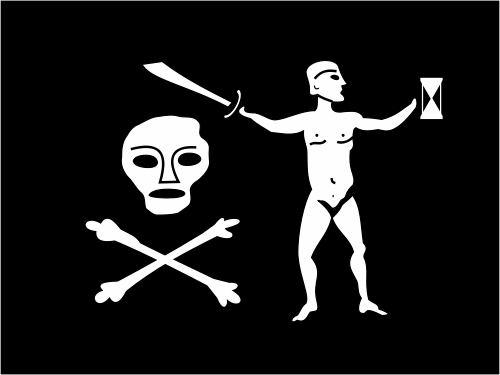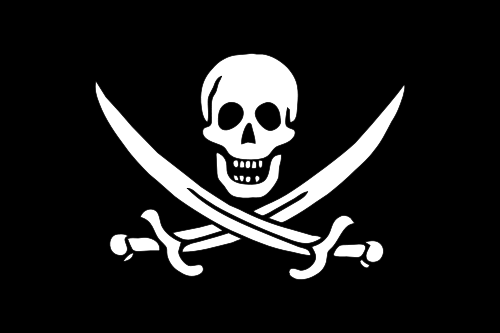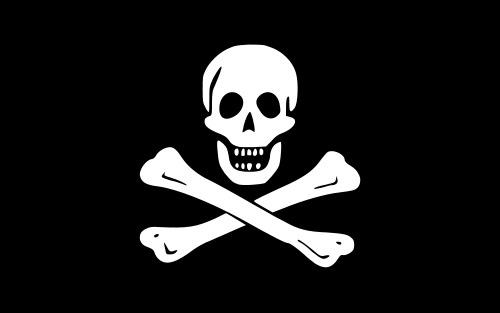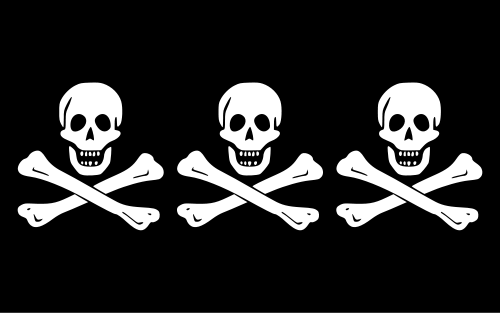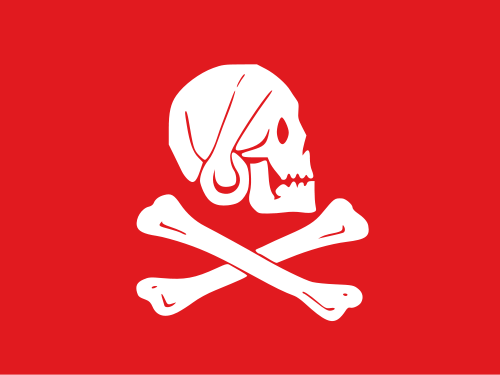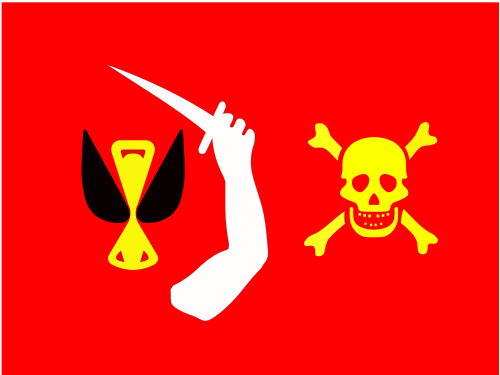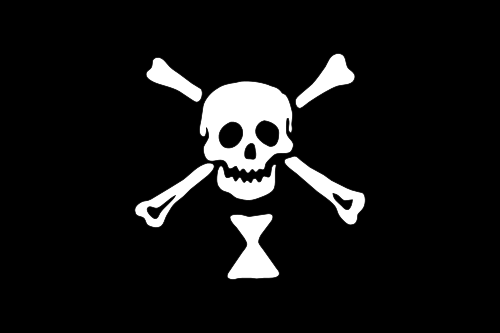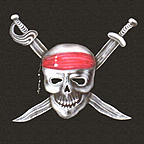
The Jolly Roger wasn't flown by pirates all the time, and in fact pirate ships had many different flags, and usually flew false colours or no colours until they had their prey within sight. When the pirates' prey was within range, the Jolly Roger was raised, usually at the same time as a warning shot from a canon was fired.
The Jolly Roger is the name given to any of the many flags flown to identify a ship's crew as pirates. The flag usually identified as the Jolly Roger is the skull and crossbones, consisting of a skull above two long bones set in an x-mark arrangement on a black field. This design was used by several pirates, including Captains Edward England and John Taylor, and some Jolly Roger flags also include an hourglass, representing that the victims' time to surrender was running out.
The flag was probably intended as communication of the pirates' identity, giving their intended prey the opportunity to surrender without a fight. If a ship then decided to resist, the Jolly Roger was taken down and a red flag was flown, indicating that the pirates intended to take the ship by force and without mercy and without quarter (since captured pirates were usually hanged, they didn't have much to gain by asking quarter if defeated). It was important for a prey ship to know that its assailant was a pirate, and not a privateer or government vessel, as the latter two generally had to abide by a rule that if a crew resisted, but then surrendered, it could not be executed.
Flying the Jolly Roger was a reliable way of proving oneself a pirate, and possessing or using a Jolly Roger was taken as proof that you were a criminal pirate rather than something more legitimate, since only a pirate would dare fly the Jolly Roger, as he was already under threat of execution.
Many variations of the Jolly Roger that have been used are shown at right.
The flag was probably intended as communication of the pirates' identity, giving their intended prey the opportunity to surrender without a fight. If a ship then decided to resist, the Jolly Roger was taken down and a red flag was flown, indicating that the pirates intended to take the ship by force and without mercy and without quarter (since captured pirates were usually hanged, they didn't have much to gain by asking quarter if defeated). It was important for a prey ship to know that its assailant was a pirate, and not a privateer or government vessel, as the latter two generally had to abide by a rule that if a crew resisted, but then surrendered, it could not be executed.
Flying the Jolly Roger was a reliable way of proving oneself a pirate, and possessing or using a Jolly Roger was taken as proof that you were a criminal pirate rather than something more legitimate, since only a pirate would dare fly the Jolly Roger, as he was already under threat of execution.
Many variations of the Jolly Roger that have been used are shown at right.


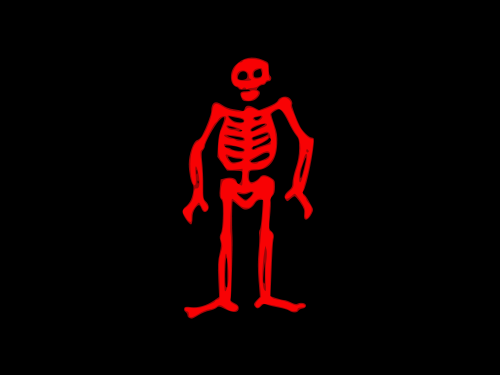
.svg.png)
